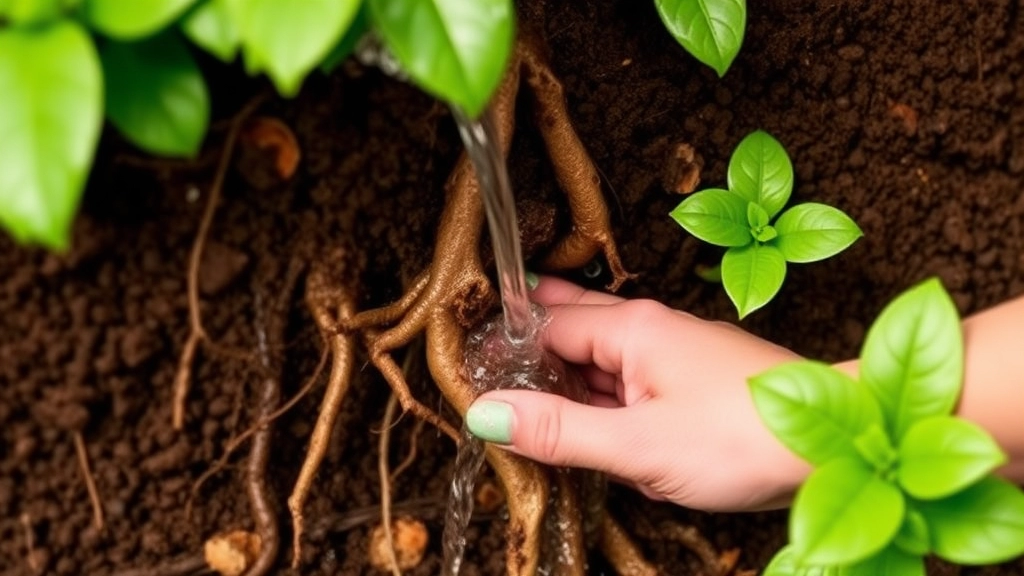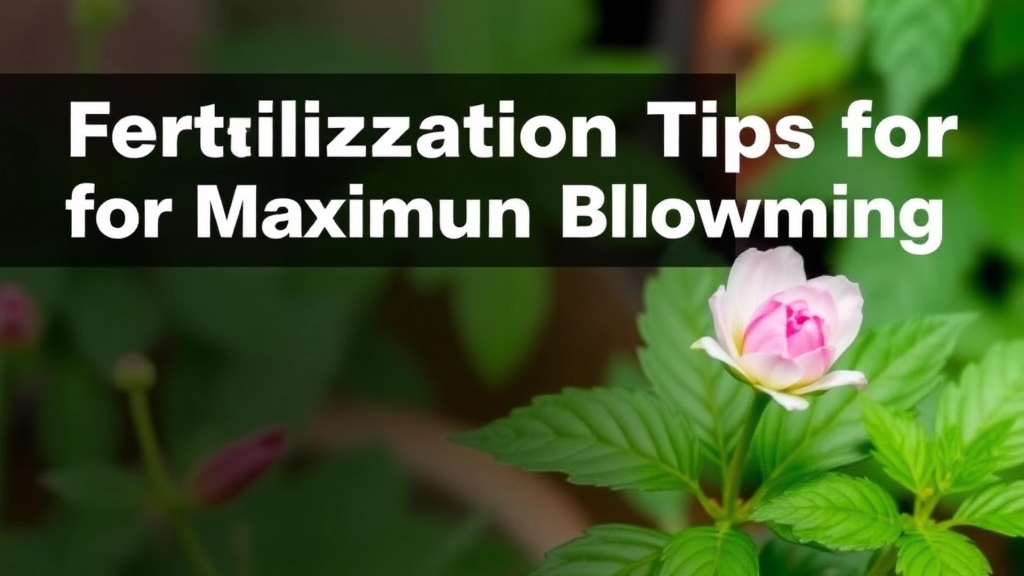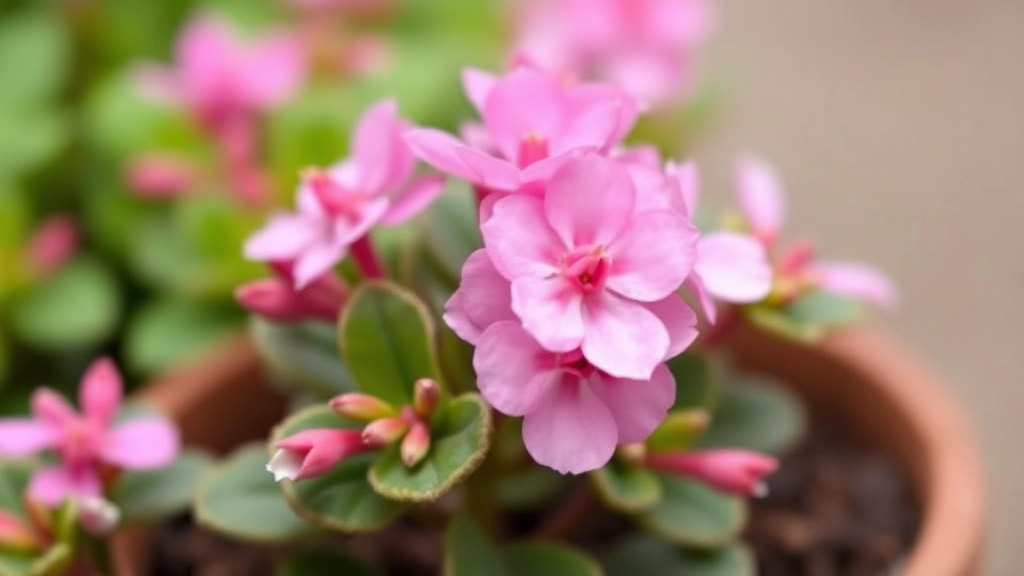Caring for a Pink Kalanchoe Plant
Caring for a pink kalanchoe plant can be a rewarding experience with the right knowledge. These vibrant succulents thrive with proper light, watering, and occasional pruning. Ensuring your pink kalanchoe gets the right amount of sunlight is crucial; they love bright, indirect light. Avoid overwatering by letting the soil dry out between waterings, which helps prevent root rot.
Key Care Tips
- Light: They love bright, indirect light.
- Watering: Let the soil dry out between waterings to prevent root rot.
- Soil: Opt for a well-draining mix.
- Fertilising: Fertilise sparingly during the growing season to encourage blooming.
- Pruning: Regular pruning will keep your kalanchoe looking its best.
- Pest Control: Stay vigilant about pests to ensure it remains healthy.
Follow these simple guidelines, and your pink kalanchoe will flourish.
Optimal Light Conditions for Pink Kalanchoe
Are you struggling to keep your Pink Kalanchoe thriving? One of the most critical aspects of plant care is ensuring it receives the right light.
Light Requirements
Pink Kalanchoe, a popular succulent known for its vibrant blooms, thrives in bright, indirect sunlight. Here’s what you need to consider:
- Direct Sunlight: While it can tolerate some direct sunlight, too much can scorch the leaves. Aim for about 4-6 hours of indirect light daily.
- Low Light: Insufficient light can lead to leggy growth and fewer flowers. If you notice your plant stretching towards the light, it’s a sign it needs more.
- Artificial Light: If natural light is limited, consider using grow lights. Position them about 12-18 inches above the plant for optimal results.
Signs of Proper Lighting
Keep an eye on your Kalanchoe for these indicators of good light conditions:
- Healthy Growth: Leaves should be firm and vibrant. For more detailed care tips, check out this complete care guide for Kalanchoe Blossfeldiana.
- Blooming: A well-lit Kalanchoe will produce more flowers, showcasing its beautiful pink hues. Learn how to make Kalanchoe bloom all summer for a vibrant display.
- Leaf Color: If the leaves start to yellow or drop, it may be a sign of inadequate lighting.
Watering Guidelines: Avoiding Overwatering and Root Rot

So, you’ve got your beautiful Pink Kalanchoe, and now you’re wondering how much water it really needs. This is a common concern for many plant lovers, and trust me, you’re not alone in this!
Understanding Water Needs
Pink Kalanchoe is a succulent, which means it stores water in its leaves. This makes it pretty resilient, but it also means that overwatering can lead to some serious problems like root rot.
Key Tips for Watering:
- Check the Soil: Before you water, poke your finger about an inch into the soil. If it feels dry, it’s time to water. If it’s still moist, wait a few more days.
- Water Deeply, But Sparingly: When you do water, give it a good soak until water drains out of the bottom of the pot. Just don’t let it sit in water—this is a recipe for disaster!
- Seasonal Adjustments: In the warmer months, your Kalanchoe might need more frequent watering. In winter, cut back significantly since the plant goes dormant.
- Use the Right Pot: Make sure your pot has drainage holes. This helps excess water escape, preventing root rot.
- Signs of Overwatering: Yellowing leaves, mushy stems, or a foul smell coming from the soil? These are all red flags that you might be giving it too much love (and water).
Best Soil Types for Healthy Growth
When it comes to nurturing your Pink Kalanchoe, the right soil is essential for promoting healthy growth. You may wonder, “What type of soil will keep my plant thriving?”
Soil Composition: Key Elements
- Well-draining soil: Pink Kalanchoe thrives in soil that allows excess water to escape easily. This prevents waterlogged roots, which can lead to root rot.
- Cactus or Succulent Mix: A commercial cactus or succulent mix is often ideal. These blends are specifically designed to provide the drainage your plant needs.
- DIY Mix: If you prefer to create your own mix, combine:
- 50% potting soil
- 25% perlite
- 25% sand
pH Levels
Aim for a soil pH between 6.0 and 7.0. This slightly acidic to neutral range supports nutrient uptake.
Organic Matter
Incorporating organic materials, like compost, can enhance soil fertility. However, ensure it doesn’t retain too much moisture.
Container Considerations
Choose pots with drainage holes. This is crucial, as it allows excess water to escape and keeps the roots dry. For more detailed care instructions, check out our Pink Kalanchoe Succulent Care and Propagation Guide. Additionally, if you encounter issues with your plant, such as leaves turning soft, our guide on causes and fixes for soft Kalanchoe leaves can be very helpful.
Fertilization Tips for Maximum Blooming

When it comes to ensuring your Pink Kalanchoe thrives and produces vibrant blooms, proper fertilization is essential. Many plant owners worry about how to provide the right nutrients without overwhelming their plants.
Understanding Nutrient Needs
Pink Kalanchoe benefits from a balanced approach to fertilization. Here are some key points to consider:
- Frequency: Fertilize every 4-6 weeks during the growing season (spring and summer).
- Type of Fertilizer: Use a balanced liquid fertiliser, preferably one that is high in phosphorus, as this promotes blooming. Look for formulations like 10-30-20.
- Dilution: Always dilute the fertiliser to half the recommended strength to avoid burning the roots.
Signs of Nutrient Deficiency
Keep an eye on your plant. If you notice:
- Pale leaves: This may indicate a nitrogen deficiency.
- Poor blooming: Lack of phosphorus could be the culprit.
Special Considerations
- Winter Care: During the dormant season (autumn and winter), reduce fertilization significantly. Your Kalanchoe won’t need as many nutrients when it’s not actively growing.
- Organic Options: If you prefer organic methods, consider using compost or a diluted fish emulsion. These options can provide a slow release of nutrients.
Pruning Techniques for a Fuller and Healthier Plant
When it comes to maintaining a vibrant Pink Kalanchoe, pruning is essential. Many plant enthusiasts worry about how to prune effectively without harming their beloved plants.
Pruning not only encourages fuller growth but also enhances blooming. Here’s how to do it right:
- Timing is Key: The best time to prune your Pink Kalanchoe is after it has finished blooming. This allows the plant to redirect its energy into new growth.
- Use Clean Tools: Always use sharp, clean scissors or pruning shears. This prevents disease and ensures a clean cut.
- Remove Dead or Yellow Leaves: Snip off any dead or yellowing leaves. This helps the plant focus its energy on healthy growth.
- Cut Back Leggy Stems: If your Kalanchoe is becoming leggy, trim back the stems to promote bushier growth. Aim to cut just above a leaf node.
- Pinch Off Flower Stalks: After blooming, pinch off the spent flower stalks. This encourages the plant to produce new flowers.
- Regular Maintenance: I recommend checking your plant every few weeks. A little pruning goes a long way in keeping your Kalanchoe healthy.
For more detailed guidance on pruning, you might find our best tips and techniques for pruning Kalanchoe helpful. Additionally, if you’re dealing with a specific variety like the Pink Kalanchoe, check out our care guide for Pink Kalanchoe flowers.
Common Pests and How to Control Them

So, you’ve got your Pink Kalanchoe thriving, but wait—what’s that? Tiny critters munching away on your beautiful leaves?
Pests can be a real headache, but don’t fret! I’ve been there, and I’ve learned a thing or two about keeping these pesky invaders at bay.
Common Pests
- Aphids: These little green or black bugs love to suck the sap from your plant.
- Mealybugs: Look for cotton-like clumps on stems and leaves.
- Spider Mites: Tiny and often overlooked, they leave webbing on your plant.
- Fungus Gnats: These annoying little flies hover around the soil, but it’s their larvae that can cause trouble.
Control Methods
- Regular Inspections: Check your plant weekly. The sooner you spot a pest, the easier it is to manage.
- Natural Predators: Ladybugs and lacewings can help control aphids naturally.
- Neem Oil: A natural pesticide that’s effective against a variety of pests. Just mix it with water and spray it on your plant.
- Insecticidal Soap: This is a gentle way to tackle pests without harming your Kalanchoe.
- Isolate Affected Plants: If you find a pest, move that plant away from your other greens to prevent spreading.
- Keep It Clean: Wipe down leaves with a damp cloth to remove dust and any potential pests.
Prevention Tips
- Healthy Plants: Strong plants are less likely to attract pests. Make sure your Kalanchoe gets the right light and water.
- Avoid Over-Fertilizing: Too much fertilizer can attract pests, so stick to a balanced schedule.
- Humidity Control: Pests like spider mites thrive in dry conditions. Keeping humidity levels up can help.
Propagating Pink Kalanchoe for More Plants
Have you ever wondered how to multiply your Pink Kalanchoe and enjoy its beauty in more spaces?
Propagating this vibrant succulent is not only rewarding but also quite straightforward. Here’s how to do it effectively.
Seasonal Care and Maintenance: Adapting to Changing Conditions
So, you’ve nailed the basics of caring for your Pink Kalanchoe. But what happens when the seasons change?
Understanding Seasonal Needs
Every season brings its own set of challenges and opportunities for your plant.
- Spring: This is the time for growth! Your Kalanchoe will start to wake up from its winter slumber.
- Increase watering as the soil dries out faster.
- Consider repotting if it’s outgrowing its pot.
- Summer: Your plant will love the longer days.
- Keep it in bright light, but avoid the harsh afternoon sun to prevent leaf burn.
- Water more frequently, but ensure proper drainage.
- Autumn: As temperatures drop, your Kalanchoe will slow down.
- Reduce wateringâless is more during this time.
- Start thinking about pruning to encourage bushier growth.
- Winter: This is the dormancy phase.
- Cut back on watering significantly; only water when the soil is completely dry.
- Keep it in a warmer spot, away from drafts.
Tips for Seasonal Adjustments
- Monitor Temperature: Kalanchoes thrive in temperatures between 15°C and 25°C.
- Humidity Levels: They prefer drier air, so avoid overly humid environments.
- Light Adjustments: As the sun shifts, reposition your plant to ensure it gets enough light.
Keeping an eye on these seasonal changes can make all the difference in how your Pink Kalanchoe thrives. For more detailed care instructions, check out our Complete Care Guide for Kalanchoe Pink Butterflies and learn about Care Tips for Kalanchoe After Blooming.
FAQs on Pink Kalanchoe Plant Care
How often should I water my Pink Kalanchoe?
Water your Pink Kalanchoe when the top inch of soil feels dry. Overwatering can lead to root rot, so it’s essential to let the soil dry out between waterings.
What are the signs of overwatering in a Pink Kalanchoe?
Signs of overwatering include yellowing leaves, mushy stems, and a foul smell from the soil. If you notice these symptoms, reduce the frequency of watering immediately.
How should I fertilize my Pink Kalanchoe?
Fertilize your Pink Kalanchoe every 4-6 weeks during the growing season (spring and summer) using a balanced liquid fertilizer, preferably high in phosphorus. Always dilute the fertilizer to half the recommended strength to avoid burning the roots.
What should I do if my Pink Kalanchoe has pale leaves?
Pale leaves may indicate a nitrogen deficiency. Consider adjusting your fertilization routine to include a balanced fertilizer that provides essential nutrients.
How can I control pests on my Pink Kalanchoe?
Common pests include aphids, mealybugs, spider mites, and fungus gnats. Regularly inspect your plant, use natural predators like ladybugs, apply neem oil or insecticidal soap, and isolate affected plants to manage pest issues.
What are the best practices for preventing pests on my Pink Kalanchoe?
Keep your plant healthy by providing the right light and water, avoid over-fertilizing, and maintain adequate humidity levels. Healthy plants are less likely to attract pests.
Should I fertilize my Pink Kalanchoe during winter?
During the dormant season (autumn and winter), reduce fertilization significantly. Your Pink Kalanchoe won’t need as many nutrients when it’s not actively growing.
Can I use organic fertilizers for my Pink Kalanchoe?
Yes, you can use organic options like compost or diluted fish emulsion. These provide a slow release of nutrients and are a good alternative to synthetic fertilizers.
What type of pot is best for a Pink Kalanchoe?
Use a pot with drainage holes to allow excess water to escape. This helps prevent root rot by ensuring the soil doesn’t stay overly moist.
How do I adjust watering for my Pink Kalanchoe in different seasons?
In warmer months, your Pink Kalanchoe might need more frequent watering. In winter, cut back significantly since the plant goes dormant and requires less water.
References
-
The Spruce: Kalanchoe Care Guide
-
Gardening Know How: Kalanchoe Plant Care
-
The Old Farmer’s Almanac: Kalanchoe
